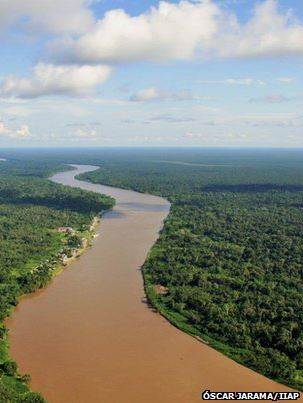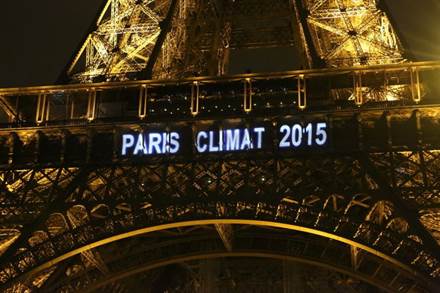
Going organic for the climate
-
Climate mitigation and adaptation
Also in the world of climate change, organic is the way to go. I am not writing about organic food here, despite my personal interest in the topic, but about peatlands, which are soils with a substantial layer of organic matter at or near the surface. Well, they are the way to go for the climate as long as you treat them well. If not, they become a vigorous source of greenhouse gas emissions.
I just returned from this year‘s climate top which took place in Lima, Peru. An important part of the discussions is reducing emissions from forestry and agriculture and how better land and water management benefits adaptation. Within this debate, there is growing attention for the fact that peatlands are the most carbon-dense ecosystems in the world.
 Have a look for instance at a recent BBC article ‘Amazon peatlands are most carbon-dense ecosystem’. While covering only 3% of the world’s land area, peatlands contain twice the carbon stock of the world’s total forest biomass. In the boreal zone they hold 7 times, in the tropics even 10 times more carbon per hectare than other ecosystems. You would say that this is convincing enough fact to safeguard these wetland ecosystems. The truth is that 0.4% of all peatlands in the world are drained for agriculture and forestry or are mined, turning them from carbon stores into a source of large greenhouse gas emissions, representing 5 percent of total anthropogenic CO2 emissions which continue year after year after year.Picture: In Amazonia’s most carbon-dense ecosystems, an estimate 90% is stored underground as peat. Source: http://www.bbc.com/news/science-environment-30448519.
Have a look for instance at a recent BBC article ‘Amazon peatlands are most carbon-dense ecosystem’. While covering only 3% of the world’s land area, peatlands contain twice the carbon stock of the world’s total forest biomass. In the boreal zone they hold 7 times, in the tropics even 10 times more carbon per hectare than other ecosystems. You would say that this is convincing enough fact to safeguard these wetland ecosystems. The truth is that 0.4% of all peatlands in the world are drained for agriculture and forestry or are mined, turning them from carbon stores into a source of large greenhouse gas emissions, representing 5 percent of total anthropogenic CO2 emissions which continue year after year after year.Picture: In Amazonia’s most carbon-dense ecosystems, an estimate 90% is stored underground as peat. Source: http://www.bbc.com/news/science-environment-30448519.
185,000 km with a middle-class car
Here are some examples calculated by Greifswald University of how significant the emissions from peatlands are. Agricultural peatlands in Germany emit almost twice as much CO2 as Jähnswalde, the World’s 7th most dirty power station. In the boreal zone, deeply drained grassland on peat emits 29 tonnes of CO2-eq per hectare per year. This is comparable to 145,000 km with a middle-class car. Potatoes on drained peatland cause 37 tonnes CO2-eq per hectare per year, comparable to 185,000 km with a car. In the EU, such climate damage of €2,960 per hectare per year is currently being subsidised!
Wise use and restoration
So, how to treat them well for the climate? Well, not by turning them into drylands, for the use of maiz, palm oil or other crops for which the peat has to be drained. The deeper you drain, the more greenhouse gas emissions… The highest priority is to place a ban on opening up new areas for drainage based uses. In addition, we must halt emissions from already drained peatlands which can be done by rewetting these drained areas. This can focus on the recovery of the ecosystem, but also on the maintenance of productive land use under wet conditions (paludiculture).
Peatlands in the climate negotiations
At the climate negotiations, it is our mission to get peatlands recognized as hotspots for climate change mitigation in the new climate agreement to be sealed in Paris next year. While for several countries peatland emissions are highly significant and often even higher than emissions from fossil fuels and cement, this mitigation potential is not well enough recognized and tapped.
The mechanisms LULUCF, NAMA’s, REDD+ and possibly the Clean Development Mechanism (once peatland rewetting becomes eligible as a new activity for the CDM) provide good mitigation opportunities for countries with high emissions from peatlands. Currently, as a lack of awareness or understanding, emissions from peatlands, with exceptions, do not come well enough forward in Parties emissions reporting and accounting.
Paris agreement: include all signficant lands in accounting rules

Our position is therefore that Parties should, as part of their mitigation plans to be submitted as part of the new climate agreement, include their approach to accounting for the land sector, including an explanation of how they will address all significant lands or activities, pools and gases; and the reason for exclusion of any significant lands or activities, pools and gases. When significant, emissions from peatlands (~organic soils) must in this way be included.
Capacity building
To increase awareness and understanding of significant lands in the land use sector, we furthermore recommend that the UNFCCC facilitates capacity building on reporting and accounting for land use with significant emissions for countries and reviewers. There is for instance a lot of expertise on monitoring and reporting of organic soils in the EU and other countries could benefit for this. This should ensure that lack of awareness, assumed lack of data or of methodological guidance will not become an excuse to keep on draining the world’s peatlands, unnoticed…
Adaptation benefits
Besides for our climate, intact peatlands cool the landscape, they facilitate flood control, they retain many nutrients, they keep groundwater in the catchment providing reserves for dry periods, and are important for biodiversity.
Peatlands must be wet: for land, for people, for climate!
